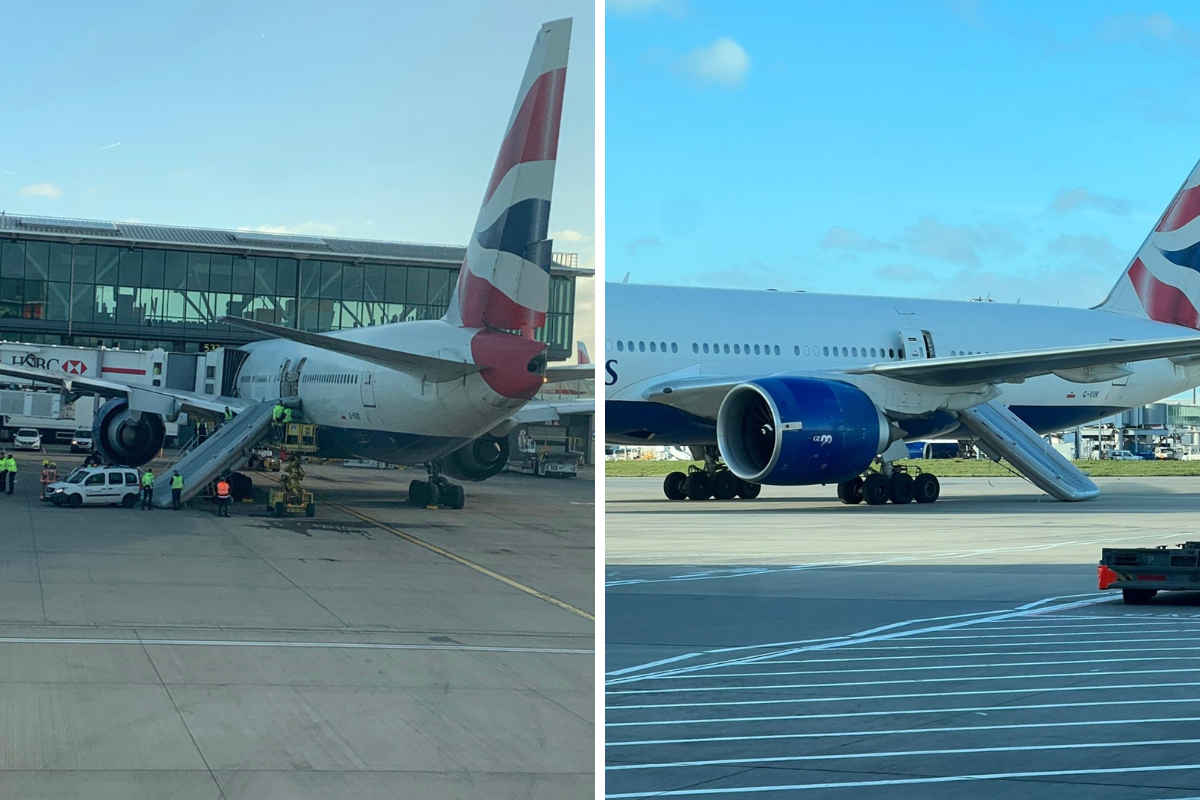
British Airways is to introduce the seemingly mysterious Japanese ritual of Shisa Kanko onboard its flights in a bid to prevent cabin crew from accidentally activating the emergency slides following a spate of costly incidents through 2023.
In January, a new hire member of cabin crew on one of their first-ever flights accidentally activated an emergency slide as a British Airways Boeing 777 pushed back from the gate at Heathrow Airport. What was strange about this incident was that it didn’t happen at a boarding door but rather one that should only ever be used in an emergency.
Inadvertent slide deployments, or ISDs as they are known in the airline industry, are relatively common, with around three ISDs occurring every single day worldwide, according to aircraft manufacturer Airbus, although the vast majority happen on the arrival of the aircraft when crew members fail to disarm the boarding door properly.
It’s much rarer for an ISD to take place during pushback when there should be no reason to open the door and activate the slide. But just six months after BA’s first ISD of 2023, a second member of cabin crew accidentally activated an emergency slide in very similar circumstances.
A few weeks after that, a third BA crew member activated the emergency slide shortly after arrival in Madrid, although the door wasn’t being used for boarding and there were no ground vehicles trying to access the aircraft. In other words, there was no reason for the crew member to open the door.
Replacing an emergency slide can cost tens of thousands of pounds plus compensation for affected passengers, as well as mess up schedules because an aircraft has to be temporarily taken out of service.
That’s perhaps why British Airways is turning to a Japanese workplace ritual known as Shisa Kanko which translates in English to mean ‘pointing and calling’.
Developed in the early 1900s on Japan’s railway network, Shisa Kanko involves train drivers and station staff pointing and calling out the status of the signal. The movement is deliberately exaggerated in order to slow down the process and get the person performing Shisa Kanko to focus solely on the task at hand.
One study into the practice claimed that Shisa Kanko reduces human error by nearly 85%.
For British Airways, Shisa Kanko will involve cabin crew pointing at the door and calling out whether the door is armed or disarmed before preparing the door for departure or arrival.
The pointing and calling method has been adopted by a number of different industries across Japan, although, despite the obvious benefits, Shisa Kanko hasn’t been widely embraced outside of Asia. One reason is the feeling of embarrassment that workers might feel when performing Shisa Kanko.
Thankfully, BA hasn’t suffered any ISDs since June, and if Shisa Kanko works as intended, it might be a long time before the next one.
Mateusz Maszczynski honed his skills as an international flight attendant at the most prominent airline in the Middle East and has been flying ever since... most recently for a well known European airline. Matt is passionate about the aviation industry and has become an expert in passenger experience and human-centric stories. Always keeping an ear close to the ground, Matt's industry insights, analysis and news coverage is frequently relied upon by some of the biggest names in journalism.








American Airlines has been using this for years
This is something I picked up and do in my work as an IT engineer as well.
I’ve always enjoyed watching the workers do this in Japan and I know I’m in good hands since it’s also a way to show bystanders what they’re confirming and not just doing it by eyes and in their minds.
One time I was on a small railway and standing behind the driver’s cab, I saw the driver was constantly pointing between his schedule and the signal which made me realize that’s part of the process that keeps those trains ontime so consistently.
As we all know, that’s what pilots do with the cockpit checklist. “Yes” or “ok” are NOT acceptable responses, they do repeat the whole point and it’s precisely because of proven effectiveness.
Watched a YT video of what they do to maintenance high speed Shinkansen trains. They point at the tracks left and right to cross it, point at each nut and bolt after replacing a part, etc. It’s why they have few if any problems or accidents.